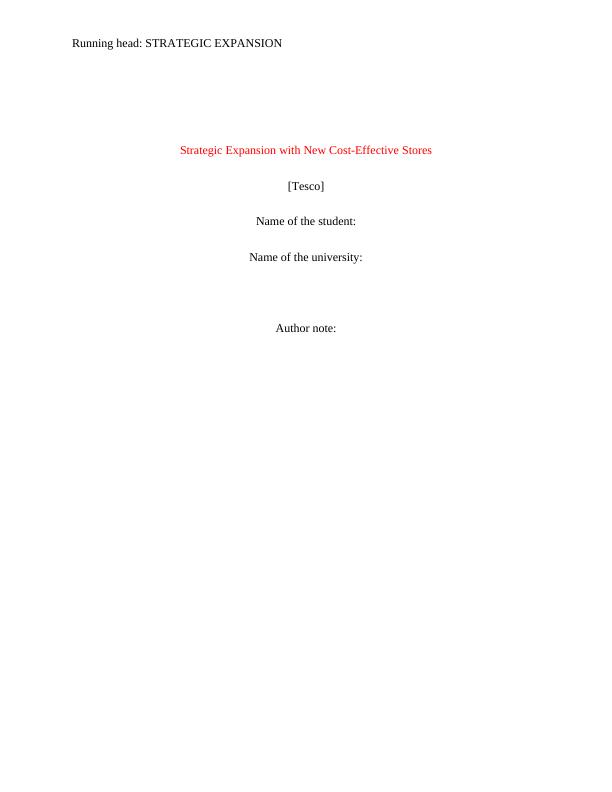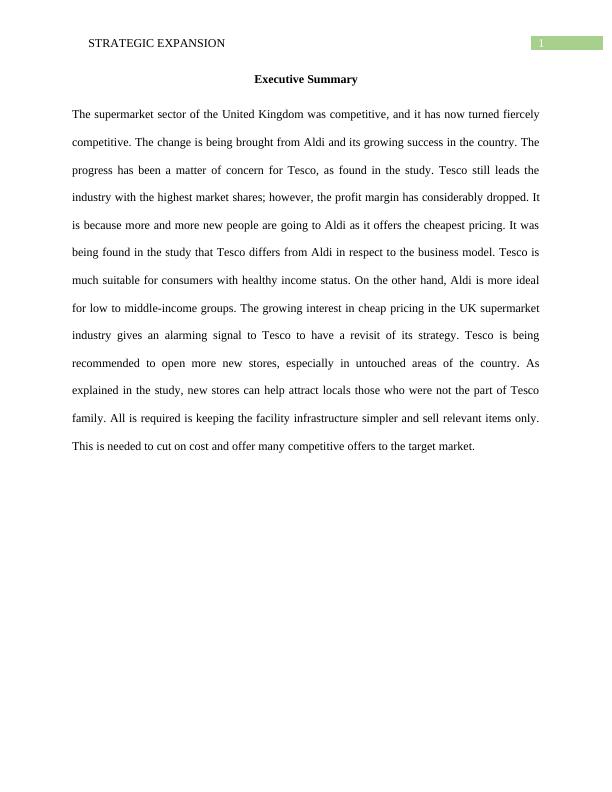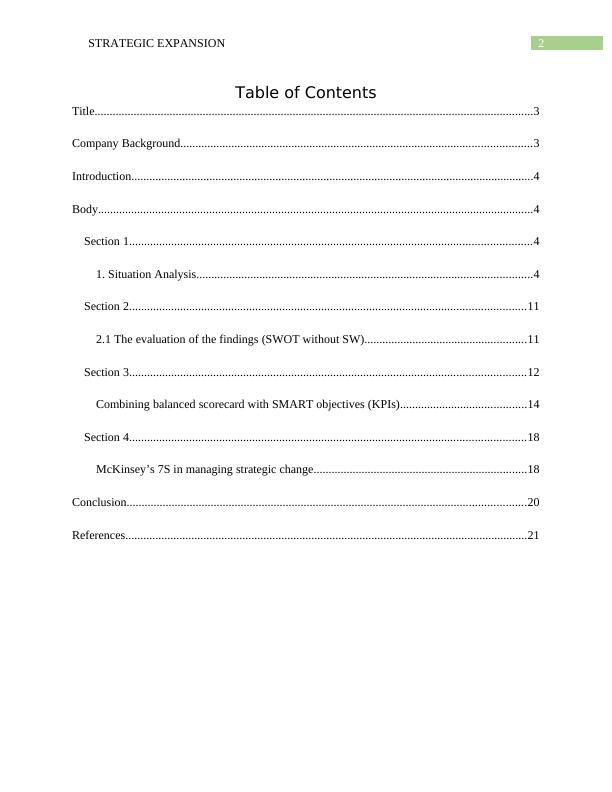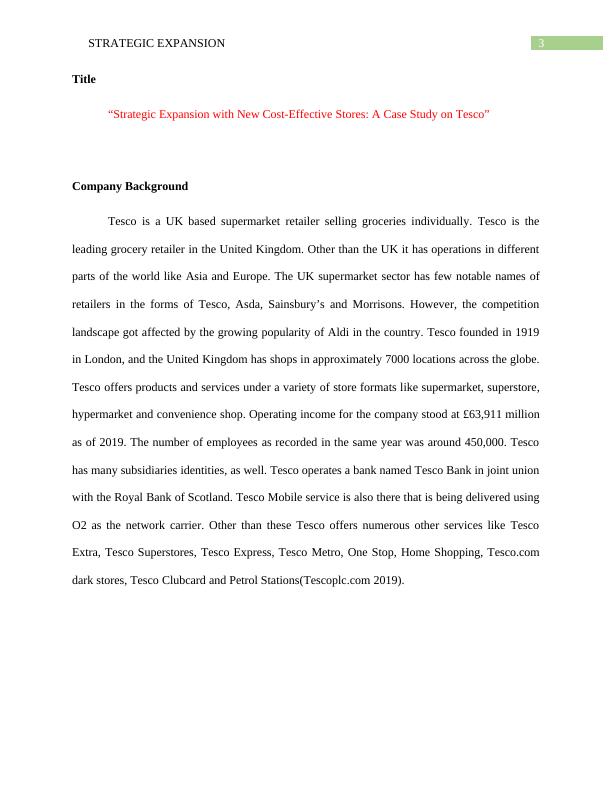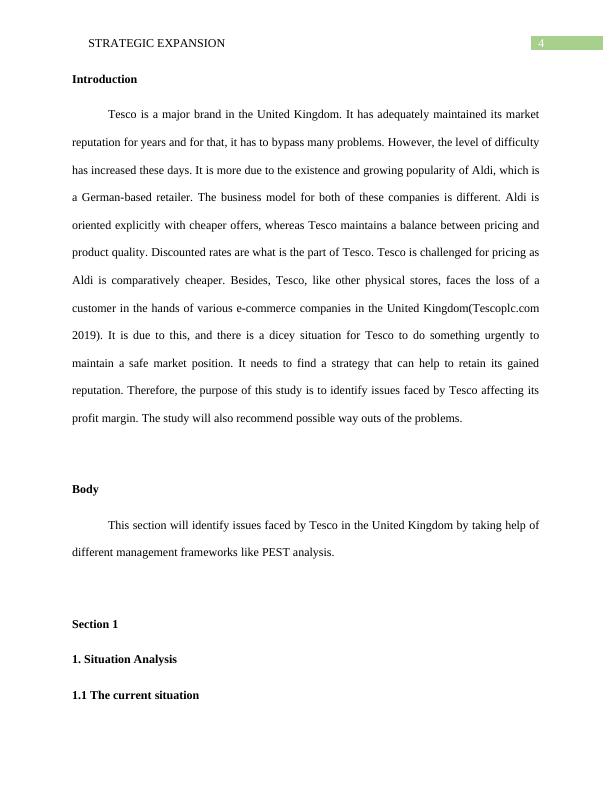Combining balanced scorecard with SMART objectives
This assignment is a 3,000-word report on strategy and change management in the context of a supermarket sector in the UK, with a focus on Tesco and its competition with Aldi. The report includes an analysis of the current situation, external environmental analysis, evaluation of findings, recommendation matrix, balanced scorecard with SMART objectives, and a critical discussion of McKinsey's 7S in managing strategic change.
Added on 2022-09-12
Combining balanced scorecard with SMART objectives
This assignment is a 3,000-word report on strategy and change management in the context of a supermarket sector in the UK, with a focus on Tesco and its competition with Aldi. The report includes an analysis of the current situation, external environmental analysis, evaluation of findings, recommendation matrix, balanced scorecard with SMART objectives, and a critical discussion of McKinsey's 7S in managing strategic change.
Added on 2022-09-12
End of preview
Want to access all the pages? Upload your documents or become a member.

